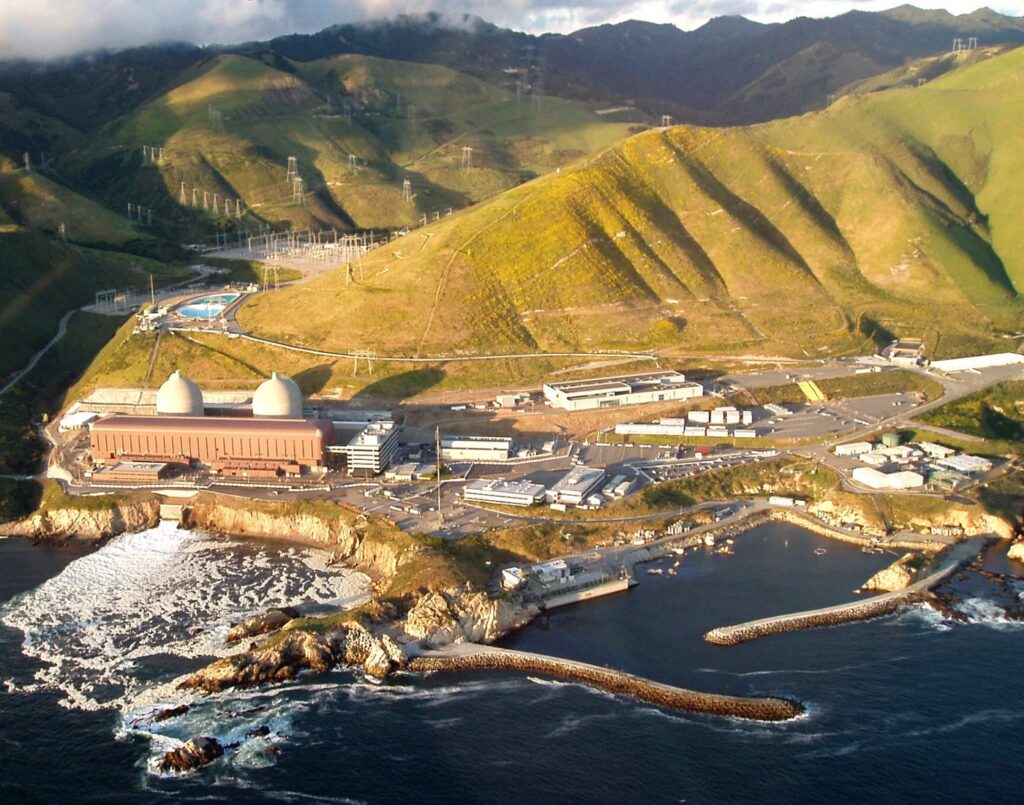On March 25th, 2022 The San Luis Obispo Tribune published, “How California’s Last Remaining Nuclear Power Plant Transformed Marine Life Off the Coast”. The article outlines the historical relationship between the Diablo Canyon nuclear power plant and the 40-acre inlet of the marine environment off the coast of the facility. Among the analysis of reports and interviews with marine biologists, the article makes a central claim, that “the warm-water discharge may be the largest environmental impact of the nuclear power plant”.

At first glance, this argument reads in a way that portrays the marine environmental impact of Diablo Canyon resulting from warm-water discharge as catastrophic. The author juxtaposes the impacts of the marine environment on Diablo Cove with the quintessential nuclear energy fears such as radiation exposure, waste storage, nuclear meltdown, and earthquakes. This comparison encourages the reader to imagine the damage to the marine environment as worse than their wildest nuclear energy fears. While I may disagree with the ways in which the author paints nuclear energy and neglects to acknowledge the objective environmental benefits of the plant, I do not necessarily disagree with their assessment. The safety of nuclear energy, Diablo Canyon specifically in this case, along with the statistically low probability of phenomena such as radiation exposure from a nuclear meltdown, makes this article’s central argument plausible — but potentially not in the way that it was intended.
The Diablo Canyon nuclear reactor provides one-sixth of California’s clean electricity, preventing 10,000,000 metric tons of CO2 per year. Closing it would mean exacerbating the effects of climate change– including accelerating ocean acidification and warming ocean temperatures. These effects threaten the entire oceanic food chain, not just off the coast of Diablo Canyon. While the article diligently outlines the effects on the Diablo Cove species such as black abalone and algae, it neglects to mention the effects of other forms of energy on the marine environment. For example, when it comes to natural gas, the drilling and extraction of gas deposits from the seafloor inevitably release gas into the marine environment which is toxic to marine life.
Further, the construction of offshore wind turbines, the common “solution” to fill the gap following Diablo Canyon’s closure, comes with environmental concerns as well. The impacts on the marine environment caused by wind turbines include increased noise that disrupts reproduction, collisions with migratory birds, bats, and insects, and localized pollution from increased sea traffic required for offshore maintenance. Contaminants from seabed sediments and also be released during construction. Discussing the effects of wind turbines on the marine environment is not meant to deter their use but rather to demonstrate that every form of energy has its tradeoffs. It is important to maintain a broad perspective when evaluating different energy sources and their impact on the environment.
The San Onofre Nuclear Generating Station (SONGS) demonstrates that there are viable mitigation strategies for the impacts of nuclear energy plants on marine environments. In 2008, the Wheeler North Reef was constructed to mitigate the marine environment effects caused by SONGS and to help increase marine life in the area. Today, the artificial reef covers 174.5 acres and supports an average of about 14 tons of fish. This reef is also expected to be expanded in the upcoming future to support more marine life. The Wheeler North Reef provides a valuable and unmentioned case study for this article, demonstrating that there are existing and effective ways to address the effects of Diablo Canyon while continuing to provide reliable energy to Californians.
Therefore, while the warming of the marine environment off the coast of Diablo Canyon may be the largest environmental impact that it causes, this is an effect that would arguably worsen with its closure and could be mitigated with the use of already proven methods and technologies. In a time when clean, reliable energy is of the utmost importance, articles such as the one published by the San Luis Obispo Tribune are detrimental to climate progress as a whole. By painting nuclear energy as a destructive environmental force rather than the climate solution that it is, the effects of climate change will continue to worsen, making Diablo Cove the least of our worries.


